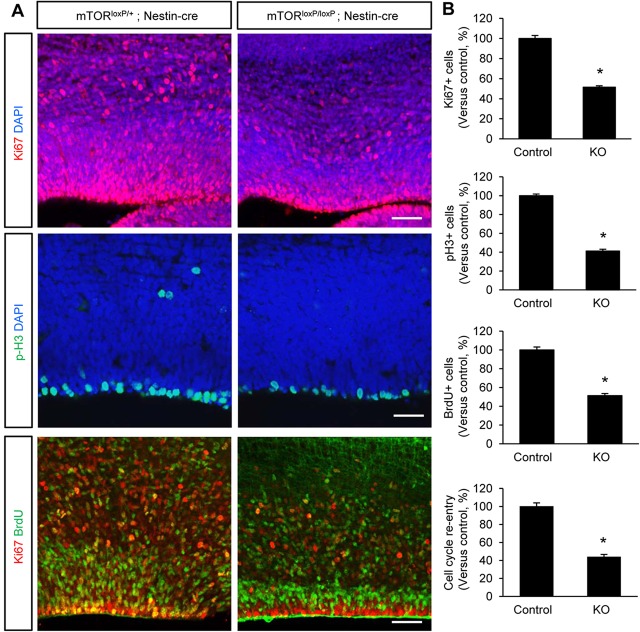Fig. 3.
Neural progenitor proliferation is suppressed in mTOR-deficient brain. (A) Top and middle: brains from control and mTorloxP/loxP; Nestin-cre mice at E15.5 were immunostained with proliferation markers, anti-Ki67 or anti-phospho-histone H3 antibody. Neural progenitor proliferation at the ventricular zone was markedly reduced in mTorloxP/loxP; Nestin-cre brains. Bottom: cell cycle re-entry analysis was performed by treating E14.5 control and mTorloxP/loxP; Nestin-cre mice with BrdU for 24 h before brain harvest. Double immunostaining with BrdU (green) and Ki67 (red) antibodies was then performed. Cells that re-enter the cell cycle were reduced in mTOR mutant brains. Scale bars: 50 μm (top and bottom panels); 25 μm (middle panels). (B) Quantification of anti-phospho-histone H3-, Ki67- and BrdU-labeled cells in the ventricular and subventricular zones. The numbers of proliferating neurons to the DAPI-stained cells per field were counted and results are relative changes versus control. The index of cell cycle re-entry is defined as the fractions of both BrdU-positive and Ki67-positive cells in total BrdU-positive cells. Control is mTorloxP/+; Nestin-cre; knockout is mTorloxP/loxP; Nestin-cre. *P<0.05.

